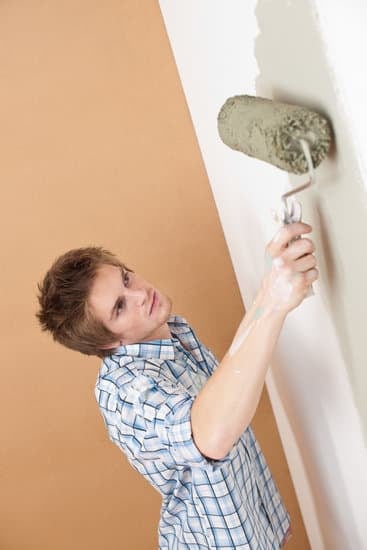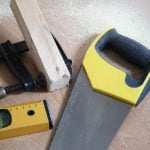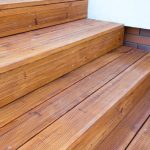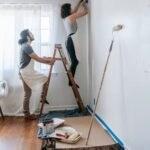Are you wondering how to improve insulation in your mobile home? Proper insulation plays a crucial role in maintaining comfortable temperatures and energy efficiency within a mobile home. In this article, we will provide you with valuable insights on the importance of insulation, assessing current insulation, identifying common issues, choosing the right materials, installation steps, sealing air leaks and drafts, budget-friendly solutions, as well as tips for maintenance and monitoring.
Insulation is essential for regulating the temperature inside your mobile home, keeping it cool in the summer and warm in the winter. Without adequate insulation, your heating and cooling systems will have to work harder to maintain a comfortable environment, leading to higher energy bills. Understanding the significance of proper insulation is the first step towards creating a more comfortable and energy-efficient living space in your mobile home.
Before delving into ways to enhance the insulation in your mobile home, it’s important to assess its current state. By identifying any existing insulation issues or shortcomings, you can determine the most effective solutions for improvement. This assessment will help you understand the specific areas that require attention and enable you to make informed decisions when choosing insulation materials and installation methods.
Assessing the Current Insulation in Your Mobile Home
Check for Drafts and Air Leaks
One of the first steps in assessing the current insulation in your mobile home is to check for drafts and air leaks. These can significantly impact the energy efficiency of your home and make it more difficult to maintain a comfortable temperature. Look for drafts around windows, doors, electrical outlets, and any other openings where air could be seeping in or out. Using a candle or an incense stick can help you pinpoint areas where drafts are present.
Inspect the Condition of Existing Insulation
Another important aspect of assessing your mobile home’s insulation is to inspect the condition of existing insulation. Over time, insulation can become compressed, damaged, or ineffective due to moisture or pests. Check the insulation in your walls, floors, and ceilings to see if there are any signs of wear and tear. This will help you determine if it needs to be replaced or reinforced.
Consider Consulting a Professional Contractor
If you’re unsure about the state of your mobile home’s insulation or need expert advice on how to improve insulation in a mobile home, consider consulting a professional contractor specializing in mobile homes. They can conduct a thorough evaluation of your insulation and provide recommendations for improvement based on their expertise and experience.
A professional assessment can give you valuable insights into areas that may require attention and help you make informed decisions about upgrading your insulation to enhance energy efficiency and indoor comfort.
By thoroughly assessing the current insulation in your mobile home, you can gain valuable insights into its condition and identify areas that may require improvement. This process sets the stage for choosing the right materials and implementing effective solutions to enhance insulation and energy efficiency in your mobile home.
Identifying Common Insulation Issues in Mobile Homes
Condensation and Moisture Build-Up
One common issue with insulation in mobile homes is condensation and moisture build-up. This can occur when warm, moist air comes into contact with cold surfaces, leading to condensation and potentially causing mold and mildew. To address this issue, it is important to properly seal any air leaks and ensure that there is proper ventilation in the home. Additionally, using insulation materials that are resistant to moisture can help prevent this problem.
Poor Air Circulation
Another common insulation issue in mobile homes is poor air circulation, which can lead to uneven heating and cooling throughout the home. This may be due to poorly installed or outdated insulation materials. To improve air circulation, consider installing a ventilation system or fans to distribute air more evenly throughout the home. It may also be necessary to replace old or deteriorating insulation with newer, more efficient materials.
Drafts and Air Leaks
Drafts and air leaks are another prevalent issue in mobile homes, especially in older models. These leaks can significantly reduce the efficiency of the insulation and increase energy costs. To address this problem, thoroughly inspect windows, doors, and other potential areas for drafts and air leaks. Seal any gaps or cracks using weather-stripping or caulk to prevent warm air from escaping during the winter months and cool air from seeping out during the summer months.
By identifying these common insulation issues in mobile homes, homeowners can take proactive steps to improve their home’s energy efficiency and overall comfort. Knowing how to improve insulation in a mobile home involves addressing these specific concerns through proper ventilation, air circulation improvements, and thorough sealing of drafts and air leaks.
Choosing the Right Insulation Materials for Your Mobile Home
When it comes to improving insulation in a mobile home, selecting the right insulation materials is crucial for achieving long-term efficiency and cost-effectiveness. With a wide range of insulation options available, it’s important to consider factors such as R-value, installation method, and compatibility with your mobile home structure. Here are some key materials to consider when upgrading the insulation in your mobile home:
1. Fiberglass Insulation: Fiberglass insulation is a popular choice for its affordability and effectiveness in reducing heat transfer. It is available in batts or rolls, making it easy to install in various areas of your mobile home.
2. Spray Foam Insulation: Spray foam insulation provides an excellent air seal and high R-value, making it a great option for improving overall energy efficiency. It can be applied to cavities, attics, and crawl spaces to create a seamless barrier against air infiltration.
3. Reflective Foil Insulation: Reflective foil insulation works by reflecting heat away from the interior of your mobile home, helping to maintain comfortable indoor temperatures. It is typically installed in attics and under the roof to reduce radiant heat gain.
4. Cellulose Insulation: Made from recycled paper products, cellulose insulation offers sustainable thermal protection and fire resistance. It can be blown into walls or attics to fill gaps and create a dense thermal barrier.
5. Rigid Foam Insulation: Rigid foam boards provide excellent thermal resistance and moisture control when installed in walls or roofs. They are lightweight and easy to cut, making them suitable for DIY installation projects.
By carefully evaluating the specific needs of your mobile home and considering factors such as climate, budget, and installation requirements, you can choose the most suitable insulation materials for improving the comfort and energy efficiency of your living space.
Steps to Properly Install Insulation in Your Mobile Home
When it comes to improving insulation in a mobile home, proper installation is key to ensuring maximum efficiency and energy savings. Here are some steps to help you properly install insulation in your mobile home:
1. Remove old or damaged insulation: Before installing new insulation, it’s important to remove any old or damaged insulation from your mobile home. This will ensure that the new insulation can be installed properly without any obstructions.
2. Measure and cut insulation materials: Once the old insulation has been removed, you will need to measure the spaces where the new insulation will be installed. Use these measurements to cut the insulation materials to the appropriate size, making sure they fit snugly into the designated areas.
3. Install insulation properly: Whether you are using fiberglass batts, foam board, or spray foam insulation, it’s crucial to install the materials properly according to manufacturer guidelines. Pay special attention to areas such as walls, floors, and ceilings that may require specific installation techniques.
4. Seal any gaps and seams: After installing the insulation, make sure to seal any gaps or seams with caulk or foam sealant. This will help prevent air leaks and maintain the effectiveness of the insulation in your mobile home.
| Mobile Home Insulation Materials | Recommended R-Value |
|---|---|
| Fiberglass Batts | R-11 for walls, R-19 for floors/ceilings |
| Foam Board | R-5 for walls and R-10 for floors/ceilings |
| Spray Foam Insulation | R-6 for walls and R-25 for floors/ceilings |
Properly installing insulation in a mobile home is essential for maintaining a comfortable indoor temperature and reducing energy costs. By following these steps and using high-quality insulation materials with the appropriate R-values, you can effectively improve the overall insulation of your mobile home.
Tips for Sealing Air Leaks and Drafts in a Mobile Home
Sealing air leaks and drafts in a mobile home is crucial for improving insulation and maintaining energy efficiency. By addressing these issues, you can create a more comfortable living environment while also reducing your energy costs. Here are some helpful tips for identifying and sealing air leaks and drafts in your mobile home:
1. Conduct an Inspection: Take the time to thoroughly inspect your mobile home for air leaks and drafts. Check around windows, doors, electrical outlets, plumbing penetrations, and any other areas where air could be escaping or entering the home.
2. Use Weather Stripping: Apply weather stripping around windows and doors to create a tight seal and prevent air from leaking in or out. There are various types of weather stripping available, so be sure to choose the right option for your specific needs.
3. Caulk Around Openings: Use caulking to seal any gaps or openings in the walls, floors, or ceilings of your mobile home. This will help prevent drafts and keep conditioned air inside where it belongs.
4. Install Door Sweeps: Consider installing door sweeps on exterior doors to create a barrier against drafts and outdoor air infiltration. Door sweeps are easy to install and can make a significant impact on reducing air leaks.
5. Address Under-Insulated Areas: Pay special attention to areas of your mobile home that may be under-insulated, such as crawl spaces, attics, or beneath the floors. Adding insulation to these areas can help prevent drafts and improve overall energy efficiency.
By following these tips for sealing air leaks and drafts in your mobile home, you can make significant improvements to its insulation and overall energy efficiency. Taking the time to address these issues will not only create a more comfortable living environment but also save you money on heating and cooling costs over time.
Creative Solutions for Improving Insulation on a Budget
When it comes to improving insulation in a mobile home on a budget, there are several creative solutions that can make a significant difference in the energy efficiency of your living space. One of the most cost-effective ways to improve insulation is by using weather stripping and caulking to seal any air leaks and drafts.
This simple DIY solution can prevent warm air from escaping in the winter and entering in the summer, ultimately reducing your heating and cooling costs.
Another creative solution for improving insulation on a budget is using thermal curtains or shades on your windows. These specially designed curtains can help block out drafts and keep the temperature more consistent inside your mobile home. Additionally, they can provide an extra layer of insulation without the need for expensive renovations or upgrades.
Finally, adding window film to your windows can also help improve insulation on a budget. Window film is an affordable option that can reduce heat loss in the winter and minimize heat gain in the summer. It’s an easy DIY installation that can make a noticeable impact on the overall energy efficiency of your mobile home.
| Creative Insulation Solution | Benefits |
|---|---|
| Weather Stripping and Caulking | Cost-effective, easy DIY solution to seal air leaks and drafts |
| Thermal Curtains or Shades | Provides extra insulation for windows without costly renovations |
| Window Film | Affordable option to reduce heat loss and minimize heat gain |
Maintaining and Monitoring Insulation in Your Mobile Home for Long-Term Efficiency
In conclusion, improving insulation in a mobile home is crucial for maintaining energy efficiency and overall comfort. By understanding the importance of insulation and assessing the current state of your mobile home’s insulation, you can identify common issues and choose the right materials for improvement. Proper installation and sealing air leaks are essential steps to take, and they can be done effectively with the right guidance.
Additionally, for those on a budget, there are creative solutions available to improve insulation without breaking the bank. Whether it’s using weather stripping or adding thermal curtains, there are various ways to enhance insulation without major expenses. However, it’s important to remember that these measures need consistent maintenance and monitoring to ensure long-term efficiency.
By regularly checking for any signs of deterioration or gaps in insulation, mobile homeowners can address issues promptly and prevent any unnecessary loss of energy. Ultimately, maintaining and monitoring insulation in your mobile home will not only save you money on energy bills but also contribute to a more comfortable living environment. With the right knowledge and resources, anyone can make significant improvements in their mobile home’s insulation.
Frequently Asked Questions
How Do I Better Insulate My Mobile Home?
To better insulate your mobile home, consider adding insulation to the walls, floors, and ceilings. You can also seal any air leaks around windows, doors, and electrical outlets to prevent heat loss.
How Can I Make My Mobile Home Warmer?
Making your mobile home warmer can be achieved by adding weather stripping to doors and windows, installing thermal curtains or shades, and using space heaters or electric blankets in colder areas of the home.
How Can I Make My Mobile Home More Energy Efficient?
To make your mobile home more energy efficient, consider upgrading to energy-efficient appliances, installing a programmable thermostat, using LED lighting, and sealing ductwork to minimize heat loss. Additionally, you can add extra insulation to the water heater and pipes to conserve energy.

I’m thrilled to have you here as a part of the Remodeling Top community. This is where my journey as an architect and remodeling enthusiast intersects with your passion for transforming houses into dream homes.





